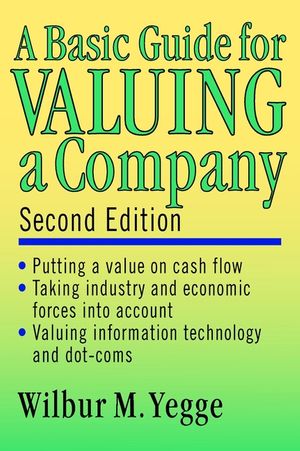A Basic Guide for Valuing a Company, 2nd EditionISBN: 978-0-471-15047-3
Paperback
304 pages
December 2001
 This is a Print-on-Demand title. It will be printed specifically to fill your order. Please allow an additional 10-15 days delivery time. The book is not returnable.
|
||||||
The Groundwork of Company Valuation for First-time Buyers and
Sellers
A Basic Guide for Valuing a Company has helped thousands of first-time buyers and sellers realize a fair, substantiated value for small businesses. Now in its Second Edition, this book covers common valuation techniques and myths, tips for determining tangible and intangible values, sample balance sheets and income statements, and approaches to valuing start-up technology and dot-com businesses.
This nuts-and-bolts guide addresses publicly traded and privately held firms, including traditional brick-and-mortar companies and the intellectual property industry. With a clear, concise writing style, the author walks readers through common practices for valuing, from collecting data to arriving at a saleable figure for all types of businesses, including professional practice, manufacturing, wholesale distributors, and a variety of retail operations. This new edition features perspectives on nontraditional valuation practices, guidance for using an excess earnings method, and an abundance of case studies from actual companies.
In order to make the most profitable decisions, before putting a business on the market or making an offer to acquire one, every beginning business purchaser and seller should read A Basic Guide for Valuing a Company, Second Edition.
A Basic Guide for Valuing a Company has helped thousands of first-time buyers and sellers realize a fair, substantiated value for small businesses. Now in its Second Edition, this book covers common valuation techniques and myths, tips for determining tangible and intangible values, sample balance sheets and income statements, and approaches to valuing start-up technology and dot-com businesses.
This nuts-and-bolts guide addresses publicly traded and privately held firms, including traditional brick-and-mortar companies and the intellectual property industry. With a clear, concise writing style, the author walks readers through common practices for valuing, from collecting data to arriving at a saleable figure for all types of businesses, including professional practice, manufacturing, wholesale distributors, and a variety of retail operations. This new edition features perspectives on nontraditional valuation practices, guidance for using an excess earnings method, and an abundance of case studies from actual companies.
In order to make the most profitable decisions, before putting a business on the market or making an offer to acquire one, every beginning business purchaser and seller should read A Basic Guide for Valuing a Company, Second Edition.



